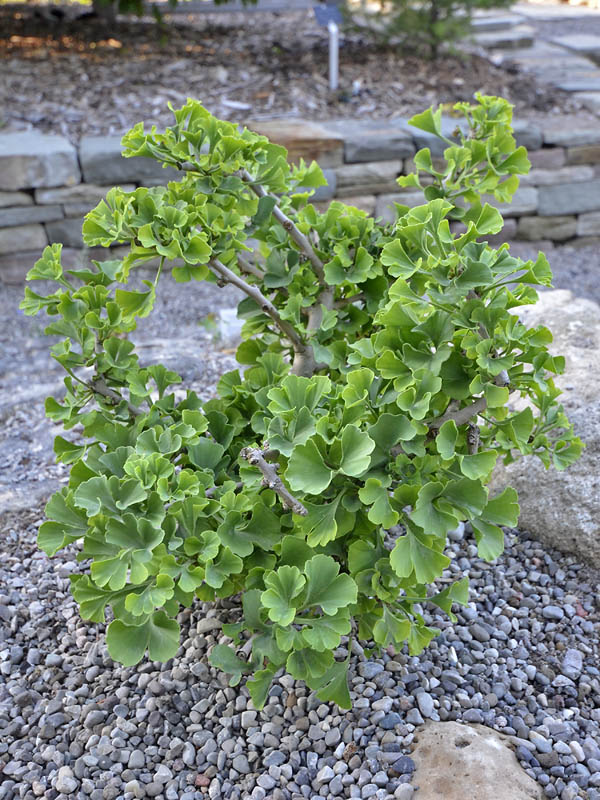
Woody > Ginkgo > Ginkgo biloba > Ginkgo biloba 'Mariken'
Ginkgo biloba
'Mariken'
Mariken Ginkgo, Mariken Dwarf Maidenhair Tree
| Family |
| Ginkgoaceae |
| Genus |
| Ginkgo |
| Species |
| biloba |
| Cultivar |
| 'Mariken' |
| Category |
| Woody |
| Type |
| Shrub (deciduous) |
| Pronunciation |
| USDA Hardiness Zone |
| 6b - 7a |
| Canadian Hardiness Zone |
| 6 |
| RHS Hardiness Zone |
| H6 |
| Temperature (°C) |
| -21 to -15 |
| Temperature (°F) |
| -5 to 5 |
| Height |
| 0.6 - 0.9 m |
| Spread |
| 0.6 - 2.4 m |
Photographs
Description and Growing Information
Flowering Period
| General Description |
| Ginkgo biloba 'Mariken' is a slow-growing, low-lying, dwarf woody deciduous coniferous tree with bi-lobed, fan-shaped leaves. |
| Landscape |
| Makes a nice bonsai, rock garden or specimen plant. |
| Cultivation |
| Best grown in moist, well-drained soils in full sun. Stake young plants for support. |
| Growth |
| Slow |
| Pests |
| No serious pests or diseases of note. |
| Habitat |
| Horticultural origin. |
| Leaf Description |
| Bi-lobed, green, turning uniformly golden yellow in autumn. |
| Flower Description |
| This particular cultivar is male and therefore does not produce flowers. |
| Fruit Description |
| Since no flowers are produced, there is no fruit. |
| Notable Specimens |
| The A.M. Cuddy Gardens, Strathroy, Ontario, Canada. Royal Botanical Gardens, Burlington, Ontario, Canada. Awarded Conifer of the Year 2010, by the American Conifer Society. |
| Ethnobotanical Uses (Disclaimer) |
| Traditionally, the wood of a Ginkgo tree is used to make religious articles and carvings. Some of the oldest cultivated Ginkgo trees are found surrounding Buddhist temples and religious shrines in China, eluding to their ancient religious value in certain cultures. Ginkgo’s fine, light wood is also traditionally used to top chess sets and other delicate wooden structures. Still today, in some Asian cultures, these trees are planted in gardens to signify momentous occasions. Medically, Ginkgo has been used for many centuries in ancient Chinese practices, but has also become popular in today’s pharmaceutical industry. Now in several countries, Ginkgo biloba plantations are cultivated for medicinal purposes. Traditionally, the fruit is cooked and used for curing respiratory ailments. The dried fruit can also be eaten however consuming too much will cause poisoning. Dried leaves and leaf extracts are widely used as herbs, and can be found commonly in health food stores. |


